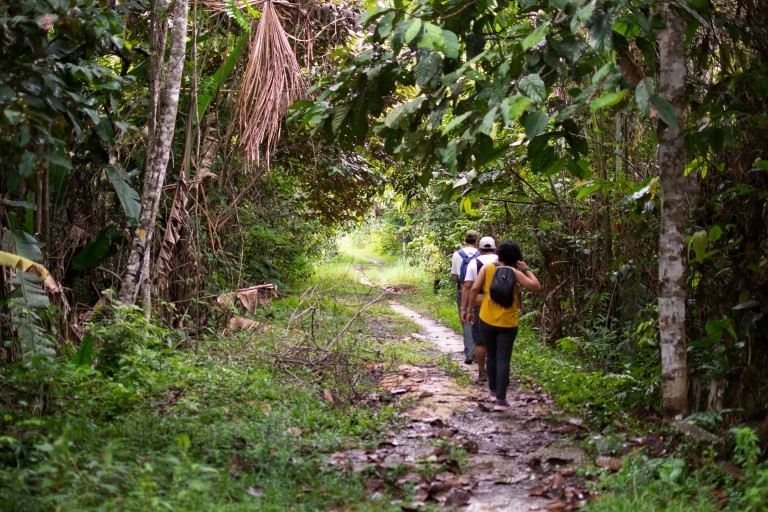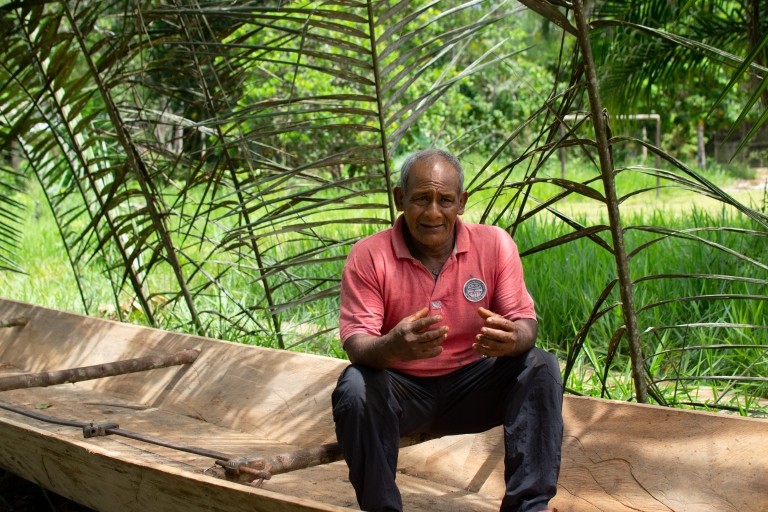Feature
Return and always return

On the way to the malocas of indigenous peoples of the Colombian Amazon, the air you breathe is humid and warm, but absolutely fresh. Not for nothing have they called the Amazon region the lung of the world: it is estimated that its forests absorb around 14% of the CO2 produced worldwide, that is, between 500 and 1,000 million tons of CO2 per year.
In addition to absorbing carbon dioxide, the Amazon forests are home to countless species of animals and provide food, medicine and shelter to diverse groups that live there, such as indigenous peoples. For them, forests are not just a provider. In the same way that the Earth gives, when it is abused, it also takes away.

“When the environment becomes ill, the balance and harmony between man and nature are broken,” says Álvaro Rodríguez, a traditional doctor from the Nonuya Villazul Reservation located in the department of Amazonas, Colombia. His organization is one of 13 that Pact’s project, Strengthening Indigenous Organizations of the Amazon (SCIOA), funded by USAID, works with to strengthen organizational capacities so that they can better defend the rights of their territories and communities.
Through an initiative to recover traditional medicinal knowledge, the reservation was strengthened as an organization, by involving young people in indigenous traditions (e.g. they learnt muinane language) to contribute to its future sustainability, and by recovering and documenting their traditions to continue to provide a fundamental service such as health.
Six traditional doctors (“grandparents”) are sharing their knowledge of medicinal plants and the natural cycle of life with six young apprentices assigned to each of them to document their stories and experiences.
For reminding us of the need to reconnect with the environment, to look at it again, to give back and take care of it, today on Earth Day we are proud to share this experience. One in which it is recognized that human health is intricately linked to the health of forests.
Other organizations that are part of the project also contribute to caring for the environment. In Peru, the Federation of Native Border Communities of Putumayo (FECONAFROPU), for example, has been making public complaints of cases of illegal exploitation within its territories, and artisan women from the Union of Asháninka and Yanesha Nationalities (UNAY) use traditional artisanal techniques to transform what the forest offers them and strengthen their economic autonomy.
The actions of these and other indigenous organizations in Peru, Brazil, Colombia, Guyana and Suriname, allow us to re-learn that, if the relationship between nature and humans is to remain alive, it must be a two way relationship.